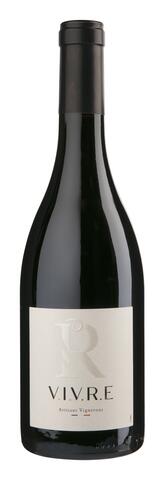Marselan de France
Wines color
Taste profile
Sweetness
Body
Acidity
Tannins
Alcohol
Table of contents
Medal winners
Encyclopedia
Origin
Marselan is a recent grape variety obtained by crossbreeding Cabernet-Sauvignon and Grenache. The French National Agronomic Research Institute (INRA) obtained and patented it in 1961. This grape variety was created via genetic engineering that originally aimed to discover the more advantageous characteristics of Grenache and Cabernet-Sauvignon.
Aromas
Marselan has ripe fruit aromas.
Wines profile
As Marselan berries are very small, the quantity of juice produced is limited (around 160 kg/hl). Marselan is thus used to make colorful, characteristic wines of high quality. They are strong, aromatic and have a very interesting structure that features soft tannins without bitterness, enabling them to age for some time. Marselan is thus a variety that combines the strengths of both Cabernet-Sauvignon and Grenache.
Cultivation areas
Production of Marselan has not exceeded 500 hectares since 2000, and is primarily concentrated in the area between Nimes and the Pyrenees and the river valley between Montelimar and Avignon.
Precocity
Marselan is a late grape variety, particularly in terms of ripening, as it is harvested 4 weeks after Chasselas, the benchmark variety. This makes it a Period III grape variety. It also buds late, 5 days after Chasselas.
Vigor
Marselan is moderately vigorous and grows large shoots. It should be cordon pruned short, which requires the vines to be trained.
Soils
Marselan clearly fares better in dry soils, which is not at all surprising since it is a crossbreed of two varieties whose best results are obtained in thin, well-drained soils.
Climat
This southern variety suited to hot, sunny regions withstands drought well. Due to its slow ripening, it requires good exposure to reach full ripeness.
Susceptibility to diseases and pests
Marselan N shows little susceptibility to gray mold, oidium and mites. Compared to its two ‘parent’ varieties, it is less susceptible to disease and pests, making it a highly advantageous plant.
Use
Marselan is used only to produce wine.
Descriptive elements
Marselan's young shoots have a sparse coat of flat-lying hairs. The shoots have green internodes, and the young leaves are green with bronze patches. Its adult leaves, which are a shiny dark green, are orbicular with five, seven or even nine lobes. Its U-shaped petiolar sinus is slightly open. The petiolar lobes are slightly overlapping with short to medium-length teeth that have convex or rectilinear sides. The veins of the leaf blade have very little to no reddish anthocyanic pigmentation. The leaf blade is jagged and smooth, and its lower surface has no hairs. Marselan's clusters are large, but its berries, which are short and round or oblong, are very, very small.
Clonal selection in France
The only approved Marselan clone (specifically named Marselan N) is number 980.


